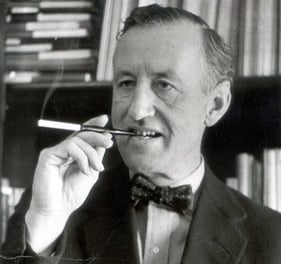“The experiment has obviously gone very much awry.” —Ian Fleming
This line, taken from a letter James Bond creator and novelist Ian Fleming wrote to his publisher upon the release of his ninth Bond novel, The Spy Who Loved Me, is the perfect encapsulation of when an artist attempts to reinvent his art and fails. Published in 1962, The Spy Who Loved Me is not only thought to be Fleming’s most drastic shift in his portrayal of both Bond and his titular spy’s adventures, but it’s also the most poorly received of Fleming’s Bond novels. So poor was the reception, in fact, that Fleming himself went to great legal lengths to prevent reprints and subsequent editions in both the United Kingdom and the United States.
 From the novel’s length, scope, and structure to sexually explicit content, The Spy Who Loved Me is such a great departure from the Bond novels that preceded it that it’s not difficult to understand why critics, readers, and Fleming himself had significant reservations about its place in the Bond canon. And unlike some works of art where appreciation for the vision grows over time, The Spy Who Loved Me remains perhaps Fleming’s most unsuccessful Bond novel both in terms of its artistic merit and commercial appeal.
From the novel’s length, scope, and structure to sexually explicit content, The Spy Who Loved Me is such a great departure from the Bond novels that preceded it that it’s not difficult to understand why critics, readers, and Fleming himself had significant reservations about its place in the Bond canon. And unlike some works of art where appreciation for the vision grows over time, The Spy Who Loved Me remains perhaps Fleming’s most unsuccessful Bond novel both in terms of its artistic merit and commercial appeal.
The Mission
Separated into three distinct sections titled Me, Them, and Him, The Spy Who Loved Me centers on Vivienne "Viv" Michel, a young Canadian woman who narrates her own story and details her past love affairs particularly with two men, Derek Mallaby and her German boss, Kurt Rainer, by whom she eventually becomes pregnant. At Rainer’s demand, Michel then travels to to Switzerland to have an abortion. After the procedure, Viv returns to her native Canada and starts her journey through North America, stopping to work at The Dreamy Pines Motor Court, managed by Jed and Mildred Phancey, in the Adirondack Mountains.
The second section of the novel begins with the Phanceys entrusting Michel to look after the motel the night before the owner, Mr. Sanguinetti, arrives to take inventory and close the motel for the winter season. Two mobsters, "Sluggsy" Morant and Sol "Horror" Horowitz, both of whom work for Sanguinetti, have been hired by Sanguinetti to burn down the motel so that Sanguinetti can make a profit on the insurance. Michel, who was to be killed in the fire, is taunted by the mobsters who attempt to rape her after she refuses to dance with them during an extended scene inside the motel.
The third and final movement of the novel begins with the introduction of 007 who interrupts Michel’s rape due to a blown tire while passing the motel. Bond quickly realizes Michel is in danger and persuades the men to show him to a room for the night. Bond tells Michel he is in America due to Operation Thunderball and was dispatched to protect a Russian nuclear expert who defected to the West and who now lives in Toronto. During the night, Sluggsy and Horror set fire to the motel and attempt to kill Bond and Michel. A gun battle ensues and, during their escape, Horror and Sluggsy's car crashes into a lake.
In the morning, Michel wakes to find Bond all but gone aside from a note in which he promises to send police assistance. He encourages her to try to forget about the events of the night prior. Police soon arrive and, after taking her statement, Michel is warned to avoid men like her attackers, but also men like Bond who are dangerous, as well. After the police leave, Michel departs the hotel and continues pondering the advice the policemen gave her about men like Bond and the danger they bring.
FAQ
The first and perhaps most jarring departure in The Spy Who Loved Me is the three-act structure in which Bond does not appear until nearly two-thirds of the way through the novel. In addition, the fact that the novel is delivered in a direct first-person point-of-view from Michel’s vantage point was another aesthetic choice fans and critics derided upon the novel’s release. The sexually explicit nature of some scenes was another detractor for fans and critics who felt Fleming was relying more on shock value than on actual storytelling or narrative devices. The heightened sexual content of The Spy Who Loved Me resulted in the novel being banned in some countries.
 Another curious aspect of Fleming’s ninth Bond novel was both the manuscript length and time devoted to the novel’s composition. Clocking in at just 113 pages, Fleming completed the novel in less than a month (January-February 1961) at his estate in Jamaica. Fleming himself was surprised at how short a window was needed to complete the manuscript, and many critics believe the brevity and dark, explicit nature of the book was reflective of Fleming’s emotional state and feelings toward the Bond franchise at the time.
Another curious aspect of Fleming’s ninth Bond novel was both the manuscript length and time devoted to the novel’s composition. Clocking in at just 113 pages, Fleming completed the novel in less than a month (January-February 1961) at his estate in Jamaica. Fleming himself was surprised at how short a window was needed to complete the manuscript, and many critics believe the brevity and dark, explicit nature of the book was reflective of Fleming’s emotional state and feelings toward the Bond franchise at the time.
Upon the novel’s release on April 16, 1962, Fleming, dismayed in the face of poor reviews and sales, wrote to his publisher saying: "I had become increasingly surprised to find my thrillers, which were designed for an adult audience, being read in schools, and that young people were making a hero out of James Bond...So it crossed my mind to write a cautionary tale about Bond, to put the record straight in the minds particularly of younger readers…”
Field Notes
As with several previous Bond novels, the cover was created by British artist and illustrator Richard Chopping in conjunction with Fleming, based on his vision and initial design. Chopping is perhaps best known for his work in creating the cover for Fleming’s From Russia with Love with its trademark red heart and pistol on the cover—many Bond scholars believe From Russia with Love to have the most affecting cover in the canon. Because Fleming fought to prevent reprints—and in fact no paperback editions were published in the United Kingdom until after Fleming’s death—first U.K. editions can bring between $6,000 and $7,000 in an auction setting.
As with all previous first editions of Fleming’s Bond novels, the title page of The Spy Who Loved Me should consist of the publisher and the title—the back page should not contain anything but the publication year. In addition, no references to editorial or critical reviews should be present on either the front or back title pages.
The Bond Dossier will return with On Her Majesty’s Secret Service...








